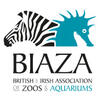Gareth Richards, UK Seal Alliance Vice Chair, on a collaboration with seal welfare at its heart:
Being involved in the rescue and rehabilitation of wild seals or equally any other wild animal, is a real privilege.
Our focus is to get them fit, healthy and released back to the wild where they belong.
The key word here is ‘wild’ and it’s a balance we strive to maintain so that animals don’t become used to human contact (habituation) or become stressed at close human contact.
Seals are powerful animals and grow to a large size but they are very sensitive to human behaviour and will generally move away from any potential conflict. However, they will aggressively defend themselves should they feel threatened.
After many months of love, care and attention at a rehabilitation centre, that big day arrives when they are released back to an environment they are most used to and one they feel most at home.
Being present at a seal release is quite an experience for many wildlife supporters and again, there’s a balance keeping these incredible animals exposed to minimal human contact whilst ensuring everyone’s safety.
With this in mind, we wanted to create good practice guidance to rehabilitation centres across the UK and approached BIAZA back in September 2024 for their valuable assistance in achieving this.
In less than six months the ‘National Seal Release Protocol’ was created by a fantastic collaboration of organisations including members of the BIAZA Pinniped Focus Group, RSPCA, UK Seal Alliance and British Divers Marine Life Rescue.
It was so pleasing to work alongside people who placed the animal’s welfare at the very heart of discussions and create such important guidance in a timely fashion.
In essence, the guidance is an opportunity to ensure that wild seals must remain as such.
With clear guidelines which include, public safety, optimal public viewing distances, the importance of keeping quiet and important information on seals and their needs during a release, we believe this has been a great step forward in demonstrating good practice.
It also includes pre-release guidance on photographing the seals fur pattern (pelage) and whisker patterns as each seal is unique and can be individually identified by these features…were you aware of that?
Just like our fingerprints these features are unique…nature is so incredible!
These help seal surveyors across the UK and Europe to track their movements and learn so much from where seals travel throughout their lives.
We have also included a link to many interesting resources and seal facts that I’m sure will amaze you. We wanted to give you as much information as possible about these iconic creatures.
So, if you are ever fortunate to witness a seal release then be assured that a lot of discussion, thought, expertise, love, care and attention has been poured into this important piece of work.
Supporting Wildlife Rehabilitation Centres across the UK is so important to ensure our precious wildlife thrive, survive and get a second chance in life.
Finally, returning to where we started….Good Luck Little One.
- Gareth Richards is Vice Chair of the UK Seal Alliance, Area Coordinator (South Wales) BDMLR and Volunteer at RSPCA West Hatch Rehabilitation Centre, Somerset.
All blogs reflect the views of their author and are not necessarily a reflection of BIAZA's positions
The National Seal Release Protocol can be downloaded via the link below:
Attached files:
-
News
.png?w=100&h=100&zc=1&f=jpeg&hash=f4751b5c9a087d116f97a1fe5460eee5) Seeing Clearly: Aurora the Snow Leopard’s Eye Surgery a Remarkable Success 12th December, 2025Banham Zoo is thrilled to share some wonderful news about one of their most charismatic residents. Aurora, the playful three-year-old snow leopard,…
Seeing Clearly: Aurora the Snow Leopard’s Eye Surgery a Remarkable Success 12th December, 2025Banham Zoo is thrilled to share some wonderful news about one of their most charismatic residents. Aurora, the playful three-year-old snow leopard,… -
News
.png?w=100&h=100&zc=1&f=jpeg&hash=da0be505fb7f3e4c164f335c5741d878) Colchester Zoological Society (CZS) gets green light for brand-new African lion habitat 9th December, 2025The Zoo have been working closely with architects at DEARADH ZÚ to develop the design of the new and exciting habitat. A number of professionals…
Colchester Zoological Society (CZS) gets green light for brand-new African lion habitat 9th December, 2025The Zoo have been working closely with architects at DEARADH ZÚ to develop the design of the new and exciting habitat. A number of professionals… -
News
.png?w=100&h=100&zc=1&f=jpeg&hash=92e9d1ec2ad7302b175c4a59d92f04fe) Another important birth for Folly Farm with arrival of second Critically Endangered Eastern Black Rhino calf 9th December, 2025Folly Farm in Pembrokeshire is celebrating the birth of another Critically Endangered eastern black rhino calf – and it’s a boy! This is the…
Another important birth for Folly Farm with arrival of second Critically Endangered Eastern Black Rhino calf 9th December, 2025Folly Farm in Pembrokeshire is celebrating the birth of another Critically Endangered eastern black rhino calf – and it’s a boy! This is the…

.png?w=100&h=50&zc=1&f=jpeg&hash=e514ec4dea7bfab63915274eb2490579)

